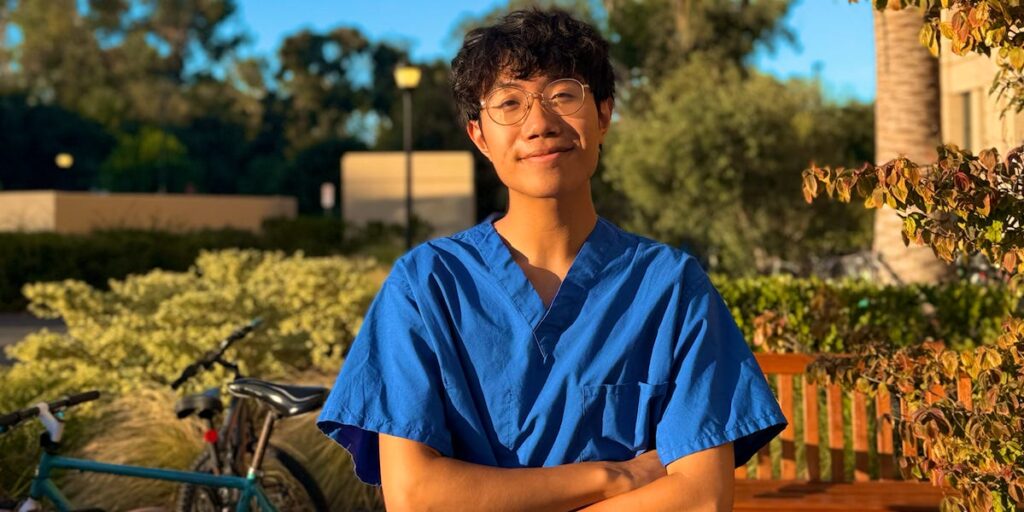X
Bluesky
Copy link
Impact Link
Save
Saved
Read in app
subscribers. Become an Insider
and start reading now.
Have an account? .
- I recently left my home in New York to move across the country and start med school at Stanford.
- My weeks are busy, filled with long lectures and social engagements.
- Although medical school is difficult and involves working with cadavers, I’m building community.
There’s a quiet moment each morning — just before the sun slips through the blinds, before I call my best friend asking if we are both catching the 8:46 a.m. shuttle to our first lecture — when I find myself missing my family.
A few months ago, I graduated from college, packed my suitcases, and said goodbye to my parents to start medical school at Stanford. It was my first time in the Bay, and when I called my mother after landing, I admitted how simultaneously nervous and eager I felt about rebuilding my community from scratch.
People warned me that medical school would be hard. They didn’t quite emphasize how beautiful it would also be.
This is what a week in my life looks like at Stanford.
Before the busy week started, I connected with friends on campus.
Over the weekend, after a lovely spontaneous trip to the beach, about a dozen of us gathered in a communal kitchen for a meal prep potluck.
The idea was simple: everyone brings a dish and tupperware to take home a little of everyone else’s cooking — enough food to last us for the entire week. I made roasted broccoli with garlic and fava beans. It turned out to be a lavish feast.
Within my medical school class, sharing meals, cooking together, and taking care of each other have become a welcome constant in our schedules.
On Monday, I spent 12 hours in lectures.
I was at the medical center from 9:30 a.m. to 9 p.m., starting with two genetics lectures in the morning before transitioning into Practice of Medicine.
POM is a course designed to help both medical and physician-assistant students apply scientific concepts to real-world clinical care.
POM emphasizes that a patient’s ZIP code matters just as much as their genetic code when it comes to healthcare, if not more.
We spent the rest of the day beginning the certification process for QPR suicide prevention training, a reminder of the more sobering side of medicine.
On Tuesday, I worked on cadavers before another busy day of meetings.
All the students in the room remained quiet as we examined the cadaver. I realized how profound a privilege it is to work with a donor body.
My TA told us about an annual donor ceremony in November, and how, at last year’s event, a donor’s daughter shared her mother’s story: an immigrant who had never had access to higher education. When the mother learned she was eligible to give her body through Stanford’s Anatomical Gift Program, her daughter remembered her mother saying, “I made it to Stanford. I finally made it to college.”
After lab, I attended a biweekly student government meeting, where I discussed upcoming events and budgeting with the other officers. I also planned a party for two classmates with September birthdays.
On Thursday, I had another cadaver lab before heading to the grocery store with a friend.
Thursday’s cadaver lab focused on identifying the nerves, vessels, and muscles in the armpit region.
When classes ended, I carved out some time to unwind. I headed downtown with a friend, window-shopped, and grabbed groceries. Back home, I did laundry so I could have fresh scrubs for the coming week.
In the evening, a friend and I enjoyed our dinner near the Stanford Oval, a sunken lawn with stunning flowerbeds and walkways open to the public.
I get to sleep in on Fridays, but the rest of the day is still busy.
After a morning genetics lecture and lunch with my advising dean, I went to the day’s POM session, which focused on health equity from a disability lens. We worked through clinical cases that pushed us to consider ethical considerations in the care of patients with disabilities.
The day wrapped up with an honest, heartwarming panel of patients and providers sharing their experiences navigating disability healthcare.
Read the full article here


